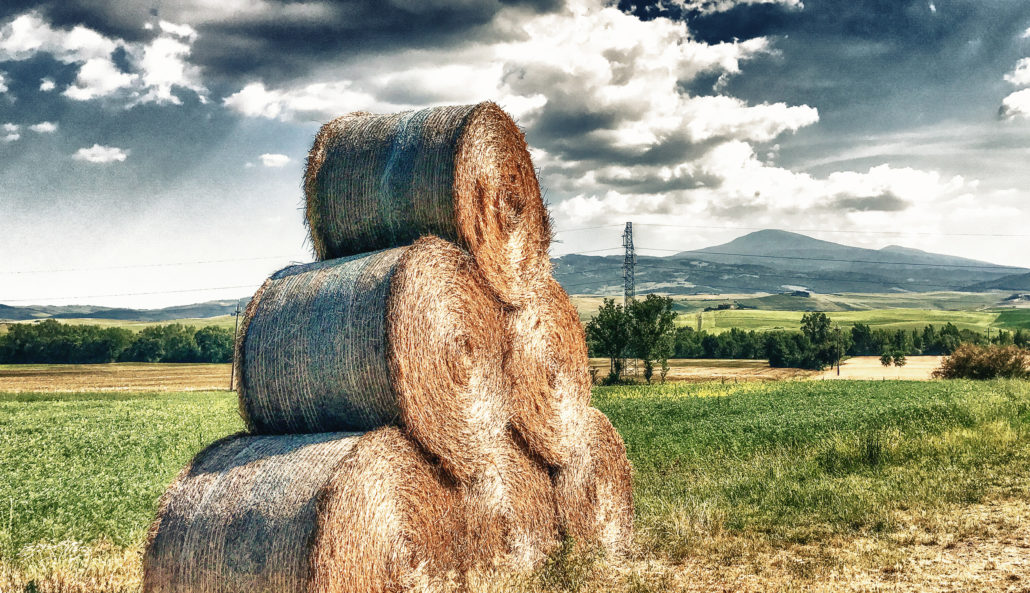With experience comes knowledge, and any experienced hay producer will tell you that the moisture of hay needs to be strictly monitored from harvest to baling. The moisture of hay at harvest is one of the most important factors in the entire practice. It dictates whether it will be enjoyable for livestock to eat or if it will spontaneously combust, and nobody likes making that phone call.

Using a hay moisture probe can help eliminate any questions about the levels before baling begins.
If your interested in learning what the right moisture level is for your product, that depends on a few different factors. The shape and size of the bales you are producing and what type of feed you are using it for are at the top of the list.
Shape and Size
Small Square Bales
If you’re producing small square bales, you’re in luck because they tend to have the best moisture tolerance. This is because the small bales are less densely packed than the larger bales. When you’re baling a small bale, you are safe with a moisture content ranging from 18 to 20 percent.
However, in the long run producing square bales is less efficient than their larger counterparts with one large square bale equaling 30 small ones. The size also depends on what the hay is being used for, of course.
Large Square Bales
Large square bales have a lower tolerance for high moisture levels than the small bales. The density at which they are packed makes for an excellent breeding ground for mold and bacteria. As mold and bacteria grow they create heat within the bale from their expansion which then can cause spontaneous combustion and a fire that may engulf a whole storage barn.
Large square bales can sit comfortably with a moisture level between 12 and 16 percent.
In reality, this type of bale is the easiest to transport if you’re selling hay long distances.
Large Round Bales
Large round bales are the easiest option for a hay farmer that is the one using his product. They are easier to manage and feed.
Because of the different types and sizes of balers that offer this shape, they can vary in overall size and density of the finished product, but in general, you should be safe with a moisture level at 15 percent when harvesting.
A round bale can be difficult to transport long distances and is best to keep for on-farm usage.
Highs and Lows of Moisture Levels
To High
The worst case scenario when the hay moisture content is too high is obviously fire. This occurs when the bale expands due to high moisture content and tries to shed the excess moisture. The warm environment fuels the growth of mold and bacteria, stripping the overall nutrients of the hay.
To Low
We’ve talked quite a bit about the consequences of to high a level of moisture, but there can also be trouble on the other end with a moisture content that is to low. As hay dries out you begin to minimize the risk of mold growth but at the same time you are losing the nutritional value of the product.
If the hay becomes to dry before baling the leaves begin to fall off and the stems become stiff and brittle. The majority of the hays nutritional value lies within the leaves, as we learned about HERE, so we need to do what we can to keep it from drying too much.
To make sure your moisture levels are where they should be, you need to be diligent with testing the hay with a moisture probe like this one before baling anything. From there you can determine whether to begin immediately or if it needs more time to cure. Testing your hay in the windrow will give you the most accurate picture of your field, some farmers even test throughout the baling process to make sure they don’t stumble upon an extremely wet section that could ruin the whole bunch.
Taking the time to determine the best moisture content for your hay is just another step in being a cut above the rest. We should always be working towards the best product we can produce!
